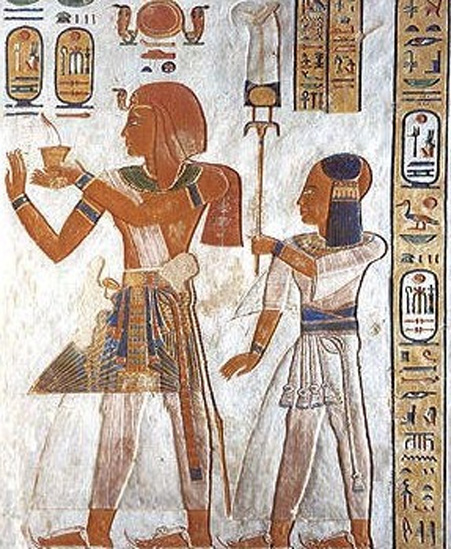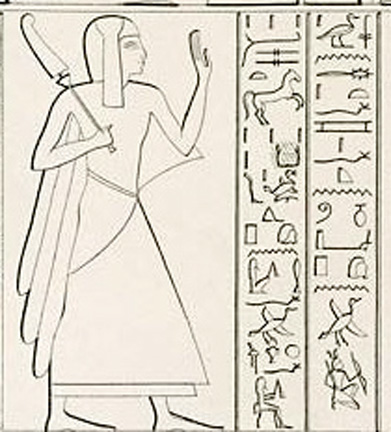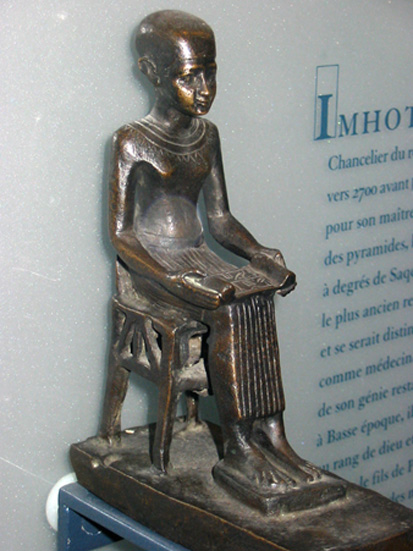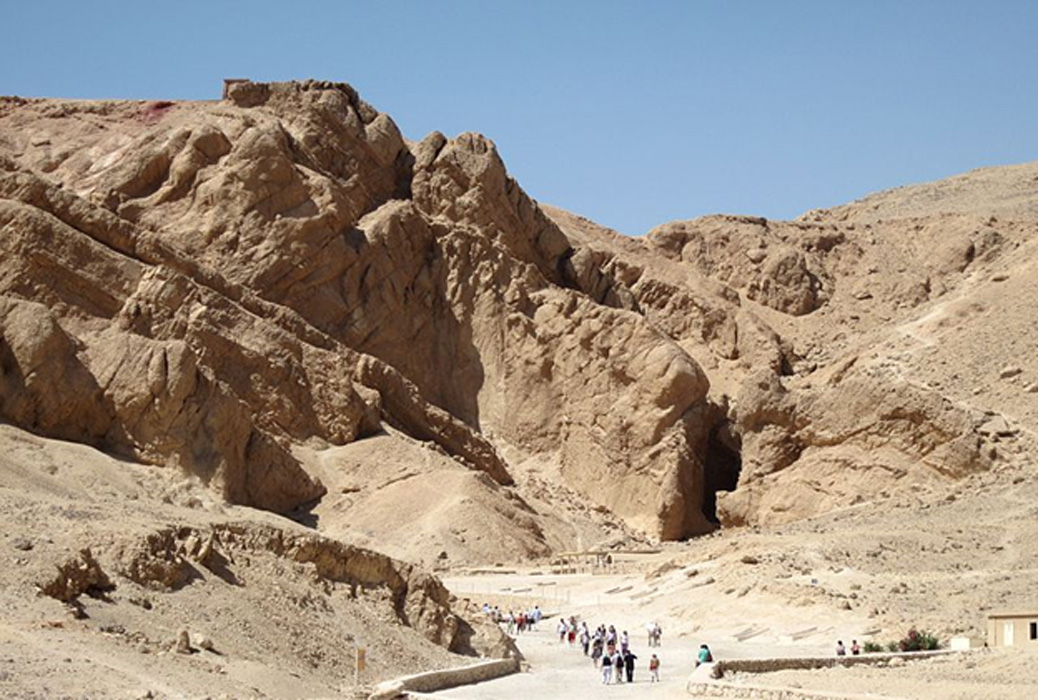Ta Set Neferu: Tombs of the Princes and Princesses – Part II
In the first part, a brief history of the research and the story of Ramesside women and their famous tombs were described. In the second part, the adventurous travel through the Valley of the Queens, where the main topic will now be connected with the tombs of princes and princesses.
The royal children were buried in the necropolis since the early 18th Dynasty (circa 1550 – 1295) of the New Kingdom Period. Most of their tombs in the Valley are dedicated to royal children who were never able to become rulers.
Sons and Gods
In the early 1900s, Ernesto Schiaparelli explored a group of five tombs of Ramesses III’s (who ruled c. 1184 – 1153 BC) sons. The most beautiful ones belong to Amun-hir-khopshef (QV55) and Khaemweset (QV44). They both were commissioned at the end of their father’s reign.
Tomb QV55 is very well preserved. The prince died as a teenager. Inscriptions show him with his father, who is depicted introducing him to the gods. The boy is wearing a typical ancient Egyptian kilt and sandals. A five-month old fetus was discovered in the tomb as well, which is believed to have been miscarried by the prince’s mother.

Rammesse III and Khaemwaset. (Public Domain)
Khaemwaset also died young but there is very little information about his age and the cause of his death. His tomb is also very well preserved, suggesting that the artists during those times were very skilled. Similar to the tomb of his brother, the wall decorations follow scenes from the Book of the Dead. The tomb was full of artifacts, broken statues, and coffins. It was looted, but many precious items survived. Schiaparelli discovered the prince’s mummy, which is now on display in Turin, Italy.
- Tiye: One of the Most Influential Women of Ancient Egypt
- Khentkawes I: The Mysterious Mother of two Kings of Egypt and a Forgotten Ruler of the 4th Dynasty
Another tomb, QV42, belongs to Pareherwenemef, who was also Ramesses III’s son. He died as a child. His tomb is damaged, but the beauty of the reliefs is still visible. QV53 is the tomb of Ramesses Meryamun, another son of the same pharaoh. Human remains from a later than the Ramesside Period were discovered in the tomb.

Parehirwenemef in a procession of sons in Luxor. (Public Domain)
The tomb of the fifth son continues to be a mystery. He was born as Seth-her-khopsef, but is known as a Ramesses VIII, the pharaoh of Egypt. His tomb, QV43, was an unexpected find. He ruled between 1130 and 1129 and he was probably murdered. Like all of the tombs of Ramesses III's sons, it was beautifully decorated with a painted and carved relief. The complex of tombs of Ramesses’ sons tells a story about his reign and the tragedies in his family.

Ramesses VIII was the last of Ramesses III's sons to ascend to the throne of Egypt during the New Kingdom. (CC BY-SA 3.0)
The Daughters of the Sun and Moon
The Valley of the Queens also has a story connected with the only known daughter of the pharaoh of the Second Intermediate Period, Sequenenre Tao. Her name was Ahmose, meaning ''Child of the Moon''. She died during the reign of Thutmose I, but she is known as a princess of the 17th dynasty. Her tomb was discovered by Schiaparelli who took her mummy to Italy. Apart from the human remains, leather sandals and a long piece of linen inscribed with 20 chapters of the Book of the Dead were found in the tomb.

Princess Ahmose's mummy. Turin, Museo Egizio. (CC BY-SA 4.0)
Another interesting tomb belongs to Princess Tanedjemet, who was a daughter of Ramesses I, and wife of Ramesses II or Sety I. Her tomb, QV33, was explored by Lepsius. The reliefs in the tomb show her as a Mistress of the Two Lands. Most of the decorations didn't survive the years and all of the tomb is in a very bad condition. It was looted for the first time at the end of the reign of the 20th dynasty, and reused during the Third Intermediate Period by an unknown person. During the Roman period, the tomb became a burial location for many people.
- Satellite Imaging Exposes 4,000-year-old Tomb in the Dahshur Necropolis
- Press Announcement: Radar Scans Reveal Hidden Chamber in Tutankhamun Tomb with 90 Percent Certainty
Other princesses buried in the Valley were mostly related to the Ramesside period. Some of them became the wives of the rulers, others died as children. Most of the reliefs in their tombs look similar to each other and tell the same sad story – a tale of broken dreams.

Princess Tanedjemy from QV 33. (Google Sites)
Good Vizier of his King
The Valley of the Queens is also the location of Imhotep’s burial. He was a vizier of Thutmose I. He was also the tutor of the king’s sons. Due to his strong position and appreciation by the pharaoh, he received a special place with the royals – he was buried in the sacred Valley of the Queens. His tomb was discovered between 1903 and 1905 by Schaparelli's expedition. The tomb is a small, simple shaft with one only chamber. The tomb wasn't damaged as much as many others in the necropolis. The chamber contained his mummy and some funerary goods including canopic jars, alabaster plaques, mummified ducks, baskets, and wooden boxes.

Statuette of Imhotep in the Louvre. (CC BY-SA 3.0)
The burial of a non-royal in such a place isn't something unique, but it is rather rare. One of the explanations for this situation is that he could have also been a relative of the pharaoh's family. Nonetheless, the lack of inscriptions and other information means that his origins are unknown.
A Valley of Secrets
Most of the tombs in the Valley of the Queens were looted and damaged in ancient times. In the early Christian years, they became a place for meetings. The Coptic occupation took place until the 7th century AD.
It is obvious that not all of the tombs have been found. Researchers believe that it is very possible that more new discoveries will appear in the Valley of the Queens than in the Valley of the Kings. For example, one of the tombs which remains undiscovered is the one which belongs to Isetnofret, a secondary wife of Ramesses II.

Valley of the Queens near Luxor, Egypt. (Public Domain)
Nowadays, most of the tombs in the Valley of the Queens are not open for tourists. Egyptologists, with the cooperation of the Ministry of Culture, the Egyptian Antiquities Organization, and other organizations interested in the Valley, are trying to restore and protect what has survived until now. The work is very expensive, and researchers are fighting against time and nature, which turns the tombs into sand.
Featured image: Valley of the Queens near Luxor, Egypt. Source: (CC BY 3.0)
References:
Christian Leblanc, Ta Set Neferou, 1989.
Aidan Dodson, Dyan Hilton, The Complete Royal Families of Ancient Egypt, 2004.
Lorna Oakes, The Illustrated Encyclopedia of the Pyramids, Temples & Tombs of the Ancient Egypt, 2006.


















